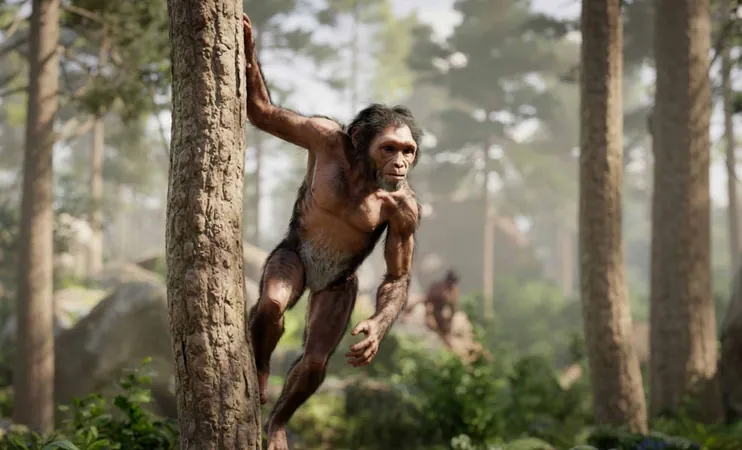
Meet Our Tiny Ancestor: The One-Meter-tall Human Devoured by Leopards!
2025-04-10
Author: Ling
Discoveries from Two Million Years Ago!
In a groundbreaking find, ancient fossils reveal that two million years ago, our distant relatives, known as Paranthropus robustus, were remarkably petite—standing just a meter tall and weighing a mere 27 kilograms! This shocking revelation challenges previous notions about early human ancestors and highlights the incredible diversity of prehistoric life.
Paranthropus robustus: More Than Meets the Eye
Recent digs have unearthed significant fossils—including a left hip, femur, and tibia—that suggest Paranthropus robustus was much smaller than modern humans. The adult female specimen measured just over one meter, cradling a weight of only 27 kg. Despite their diminutive size, these ancestors weren't just diminutive—they were equipped with unique skills that set them apart. Capable of walking upright on two legs, much like we do today, they also excelled at scaling trees, an essential adaptation that likely aided in avoiding predators and foraging for food.
Lurking Predators: The Leopard Threat
But the life of Paranthropus robustus was not without peril. Researchers have announced a chilling discovery: fossil analysis reveals bite marks from leopards! These marks indicate that this small species may have been a meal for these fearsome predators.
As one researcher put it, "The evidence suggests this individual was likely hunted by a leopard." These findings serve as a vivid reminder of the dangers our ancestors faced in their natural habitats, painting a picture of vulnerability and survival strategies in early human life.
Why So Small? The Mystery of Paranthropus robustus
The small stature of Paranthropus robustus beguiles scientists, raising intriguing questions about evolution. Why did this species develop to be so tiny? Some researchers propose that it could have been a natural variation, while others believe it might be an evolutionary response to limited resources in their environment.
This enigma underscores the complexity of evolutionary pressures on our ancestors. As researchers continue to dig, they hope to unearth more fossils that could shed light on whether this small size was an adaptation or simply an anomaly.
The Ongoing Tale of Our Ancient Ancestors
As studies progress, the fossilized remains of Paranthropus robustus will likely unveil even greater insights into the struggles faced by early humans. Their remarkable ability to climb trees and evade deadly predators highlights not only their resourcefulness but also the adaptability of early hominins despite their small stature.


 Brasil (PT)
Brasil (PT)
 Canada (EN)
Canada (EN)
 Chile (ES)
Chile (ES)
 Česko (CS)
Česko (CS)
 대한민국 (KO)
대한민국 (KO)
 España (ES)
España (ES)
 France (FR)
France (FR)
 Hong Kong (EN)
Hong Kong (EN)
 Italia (IT)
Italia (IT)
 日本 (JA)
日本 (JA)
 Magyarország (HU)
Magyarország (HU)
 Norge (NO)
Norge (NO)
 Polska (PL)
Polska (PL)
 Schweiz (DE)
Schweiz (DE)
 Singapore (EN)
Singapore (EN)
 Sverige (SV)
Sverige (SV)
 Suomi (FI)
Suomi (FI)
 Türkiye (TR)
Türkiye (TR)
 الإمارات العربية المتحدة (AR)
الإمارات العربية المتحدة (AR)